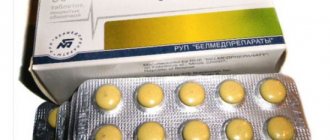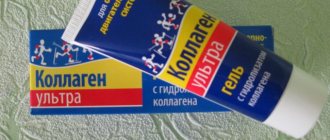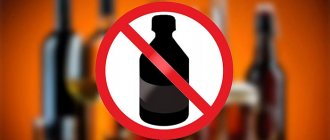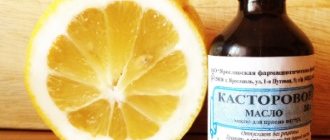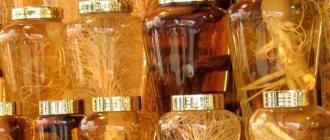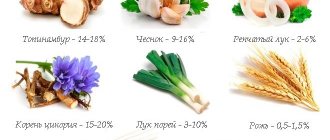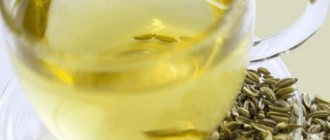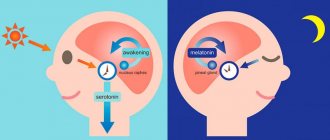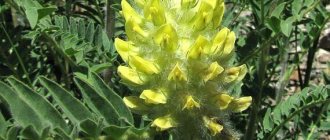The liver and gallbladder perform many functions in the human body, including direct participation in digestion processes through the production of special enzymes, the synthesis and accumulation of bile. Any disturbances in these organs, their structure, structure or work, immediately affect a person’s well-being, manifesting itself in various symptoms such as heartburn, bowel disorders, weight loss, and pain. In some cases, pathological processes in the liver or gall bladder become the first signs of the development of dangerous diseases - cirrhosis of the liver, cholelithiasis, inflammation of the biliary tract. That is why, if alarming symptoms appear in the abdominal area, you should not delay going to the doctor. In this case, one of the procedures that the doctor will prescribe to examine the condition of the internal organs may be duodenal intubation.
What is the method of duodenal intubation?
Duodenal intubation is the collection of bile from the duodenum using a probe. The device consists of a thin rubber tube 1.5-1.7 m long and 4-5 mm in diameter. The end for swallowing is decorated with a metal nozzle with holes.
Probing is used to examine the composition of bile in order to identify diseases or parasites. The procedure is also prescribed to remove excess juice from the bladder when this is physiologically impossible due to the structural features of the digestive tract or pathologies.
Stimulation with sodium chloride, glucose or olive oil is used to release juice from the gallbladder into the intestine. A duodenal tube is inserted into the digestive tract through the oral cavity, the esophagus to the duodenum.
Special tubes are used to collect the material. The procedure itself, just collecting bile, takes 1.5-2 hours.
Varieties of the method
Duodenal intubation is a procedure that, depending on the purpose (diagnosing a disease or eliminating excess bile), can be carried out using different methods.
| Method name | Purpose | Features of the event |
| Tubage (blind method) | It is prescribed to remove excess bile when it stagnates in the bladder and there is a risk of stone formation. | Indications for tubing are ultrasound results. In this case, the procedure is carried out without using a probe. The patient, with the help of prescribed drugs, increases the release of bile from the gallbladder into the duodenum. The juice is then excreted in the feces. |
| Fractional sensing | To study the composition of bile in order to identify pathology and parasites. | The process consists of 5 stages of material collection. In the process, intestinal and pancreatic juices, as well as bile, are collected. The procedure is controlled by advancing the probe and administering medications. |
| Chromatic sensing | In this case, the fractional examination is completely repeated. But before it is carried out, the patient takes methylene blue in a gelatin capsule. This substance can color the juice only in the gall bladder. The secretions and juices from the liver, pancreas and intestines do not change. This allows:
| |
| Minute probing | Prescribed for suspected violations of gallbladder contractions. | It is carried out in the same way as fractional sounding. Particular attention is paid to the 3rd phase. If after the introduction of the irritant the color of the secreted bile changes, then the pathology is confirmed. |
Each procedure is prescribed by the treating specialist. Before carrying out, preparation and instruction on the rules of conduct during probing are necessary. Indications and contraindications for the procedure are also taken into account.
Preliminary preparation
Preparation for duodenal examination begins 5 days in advance. In order for the analysis results to be reliable, it is necessary to exclude the use of certain pharmaceutical drugs:
- choleretic;
- antispasmodics;
- vasodilators;
- laxatives;
- medications that improve the digestion process.
24 hours before the study, the patient is shown atropine - a 0.1% solution is administered subcutaneously. Or take a mixture of 8 drops of the drug, 30 g of xylitol and a small amount of warm water.
Before a chromatic duodenal examination, you must take methylene blue in a gelatin capsule. The product should be consumed 3-4 hours after dinner.
Important! The evening meal should be light: you need to completely eliminate foods that cause gas - milk, brown bread, legumes, potatoes.
At the preparatory stage, a throat smear is taken from the patient on the eve of probing. This procedure is done in order to see the presence of pathogenic microflora and prevent its penetration into the bile samples being studied.
The procedure is carried out in the morning, on an empty stomach. Before probing, the pharynx and oral cavity are treated with antiseptic agents.
Indications for use
The procedure is carried out in the presence of direct indicators (pathology has already been identified and material sampling is necessary, as well as to track the dynamics of treatment) and indirect indicators (based on existing symptoms).
Symptoms for which duodenal intubation is prescribed:
- pain in the right hypochondrium of varying severity;
- a feeling of bitterness and the smell of rot in the mouth, regardless of food intake;
- nausea and vomiting with the presence of bile;
- urine has a brighter color and stronger odor;
- change in the color of stool and the presence of blood streaks in it;
- the skin and whites of the eyes have acquired a yellow tint;
- dysfunction of the intestines, which is manifested by bloating and increased gas formation. Constipation and diarrhea without obvious causes.
- enlarged liver upon examination of the patient.
After examining the discharge obtained with a probe, the preliminary diagnosis is confirmed or denied.
Using duodenal intubation, the following pathologies can be identified:
- parasitic infestations (giardiasis, opisthorchiasis);
- inflammatory processes and tumor formations in the gallbladder (in any form);
- inflammatory processes in the bile ducts or other pathologies that provoke a narrowing of the bile ducts;
- liver pathologies (cirrhosis, hepatitis, abscess);
- inflammatory processes in the mucous membrane of the stomach and duodenum;
- violation of the contractile function of the gallbladder.
For therapeutic purposes, duodenal intubation is used to remove excess bile when it stagnates in the gallbladder (pathology or physiological feature). And for the direct administration of drugs, in order to destroy parasites or in preparation for surgery.
Diet and meals
If duodenal intubation is prescribed, the technique for performing it must be strictly observed. The manipulation is carried out on an empty stomach. The last meal should take place the night before, no later than 19:00. It is advisable to keep the dinner light. It is strictly forbidden to consume foods that can cause frequent gas formation in the intestines. These include:
- potato;
- Borodino bread;
- dairy products.
In the evening, the patient is prescribed the drug "Atropine", which needs to be taken 8 drops. In some cases it is administered subcutaneously. They also drink warm water, to which 30 g of xylitol is added.
Contraindications for the study
Duodenal intubation is a process that also has contraindications for:
- with bleeding in the digestive tract;
- severe cardiovascular pathologies;
- impaired blood clotting and fragility of blood vessels;
- high blood pressure;
- obstruction of the esophagus and severe curvature of the spine;
- ulcers in the stomach;
- congestion of the nasal passages (during the procedure it is necessary to breathe through the nose, congestion will not allow normal probing);
- diseases of the respiratory system (asthma);
- epileptic and convulsive seizures;
- the period of gestation and children's age up to 3 years;
- burns of the digestive tract or severe poisoning;
- pathologies of the liver, gall bladder and stomach in the acute stage;
- cancers in the last stages;
- the presence of stones in the gall bladder, the procedure can cause their displacement with subsequent blockage of the passages;
- serious condition of the patient.
Before the procedure, it is necessary to inform about any contraindications, otherwise the sounding will result in complications.
In what cases is such a procedure prescribed?
Probing is carried out both by direct indicators and in the presence of indirect signs:
- In the first case (when the diagnosis is already known), the material is required to determine the stage of the disease or the dynamics of treatment.
- In the second, when the cause of the illness is not yet clear, the study is used to more accurately determine the diagnosis.
Blind duodenal intubation improves drainage of the gallbladder and biliary tract, helps remove suspended matter in the gallbladder, and leads to a positive clinical effect in chronic cholecystitis and functional disorders of the gallbladder.
Indications for duodenal intubation:
- gallbladder diseases (chronic cholecystitis, chronic cholangitis);
- liver diseases;
- suspicion of parasitic infestation.
Advantage of the method
To diagnose pathologies of the stomach, liver and gall bladder, specialists use 3 methods:
- Duodenal sounding.
- Drainage of the abdominal cavity.
- Ultrasound.
When comparing them, sensing has a number of advantages:
- there is no surgical intervention, which reduces the risk of complications and infection;
- During the examination, 3 types of bile are collected for examination;
- anesthesia is required in rare cases;
- excess bile can be removed;
- high accuracy of diagnosing pathologies.
The procedure is performed as an inpatient procedure and there is no need to stay in the hospital after the procedure (if the patient’s condition is stable).
Flaws
Duodenal intubation also has disadvantages - these are:
- duration of the procedure;
- swallowing the probe causes gagging, which is difficult to cope with;
- to improve the release of bile, stimulants are administered through a probe or intramuscularly;
- you need to lie in one position all the time, your body becomes numb;
- removal of the probe is also accompanied by a gag reflex;
- quite a large list of contraindications;
- Complications may occur during and after the procedure (will be discussed below);
- slight sore throat after tube removal.
If the probe is not properly disinfected, the procedure may result in complications.
How to prepare for research
To obtain correct/accurate results, the specialist discusses with the patient all the nuances of preparation for the procedure and behavioral characteristics at the time of its implementation. Initially, an ultrasound is performed to rule out the presence of gallstones. The digestive tract must be completely clear of food and medications that could affect the test results. Preparation begins 5 days before the scheduled examination.
From this day on, taking medications is excluded:
- drugs to relieve spasms (no-spa, papaverine, spasmalgon);
- choleretic and laxatives (allochol, holosas, senade);
- medications that dilate blood vessels and affect the functioning of the gastrointestinal tract (abomin, festal, mezim).
If discontinuation of medications is not possible, then this is reported to the treating specialist. In this case, a different examination method is prescribed.
3 days before the procedure, you must follow the diet prescribed by your doctor. Eating hard-to-digest, fatty and spicy foods is prohibited. Foods and dishes that cause gas formation in the intestines are also excluded.
Alcoholic beverages are prohibited to be taken 48 hours before probing; nicotine should not enter the body on the day of the examination.
The last meal is taken one day before swallowing the probe. Usually this is breakfast, which consists of liquid porridge with water or broth. During the day you are allowed to drink drinks (weak tea, water); juices, especially those with pulp, can distort the result. Mineral water is also excluded.
In the evening, before the examination, an enema is performed to cleanse the intestines, since taking laxatives is prohibited. To avoid the accumulation of gases in the intestines, the patient takes drugs to remove gases (espumisan, dill water) for 5 days. A day before, an injection of atropine is administered to improve the release of bile during the examination period.
Features of preparation for diagnostics
The duodenal intubation procedure can only be carried out strictly on an empty stomach, so the patient should not eat 8-10 hours before it, and 3-4 hours before the procedure the patient should refrain from drinking liquids.
As part of patient preparation, dietary restrictions are required five days before the scheduled procedure. The following must be excluded from the menu:
- High-fiber fruits and vegetables, raw and cooked;
- bread, pastries;
- confectionery;
- milk and dairy products;
- legumes;
- fatty meats and fish.
This diet is introduced to reduce the level of gas formation in the intestines.
Preparation for the procedure also requires stopping the use of the following medications during the same period:
- choleretic (Barberin, Tsikvalon, Allochol, Flamin, Holosas and others);
- antispasmodics like No-Shpa, Spazmalgon, Papaverine, Beshpan;
- laxatives;
- vasodilators;
- enzyme-containing ones (Pancreatin, Creon, Festal).
On the eve of the study, the patient must take 8 drops of Atropine in a 0.1% solution. The substance can also be administered subcutaneously. In addition, you can drink a glass of warm water with 30 grams of xylitol dissolved.
The objectivity of the results obtained directly depends on how carefully the patient follows all the preparation requirements.
How is duodenal intubation performed?
Duodenal sounding is an examination that is carried out in several stages. As a result, 3 test tubes with different compositions of bile and juice will be filled.
Performing duodenal intubation in stages:
- The doctor measures the required length for swallowing on the probe. To do this, the patient clamps the end of the rubber tube with his teeth; the mark should correspond to the level of the umbilical cavity.
- The patient should be in an upright position, preferably sitting. To properly insert the tip of the probe (olive), the mouth must be wide open. The specialist places the olive at the very root of the tongue, at which time it will be necessary to make swallowing movements. The doctor makes the procedure easier by gradually pushing the tube into the esophagus. It is important to ensure that the tip does not enter the trachea and damage the lung (this is why swallowing is done in a vertical position). To ensure that the olive is in the esophagus, the patient is asked to breathe through the mouth. Breathing should be free.
How duodenal intubation is performed step by step - When the tip enters the stomach, a cloudy liquid begins to flow out of the tube. After this, the patient should lie on his right side, with a warm heating pad in the liver area. In this position, bile production improves and the risk of salivary masses reflux into the respiratory tract is reduced. In this position, the patient continues to swallow the probe to the desired level.
- After the olive enters the duodenum, a yellowish liquid will begin to flow into the test tube. This is a mixture of pancreatic and intestinal juices with bile. This composition must be filled into the first test tube. If the necessary secretions do not arrive, it means the tube is bent in the stomach, then the specialist removes the probe to the desired level and repeats the swallowing procedure until the olive is in the duodenum.
- After collecting the required amount of fluid, the probe is clamped and agents are administered intravenously to improve the release of bile. Or through a probe. After 10 minutes, the clamp is removed and bile should flow out of the tube; it may be brown or olive in color. The 2nd test tube is filled with this material.
- When a light yellow liquid begins to be released from the tube, this means complete removal of bile from the gallbladder and its release from the intrahepatic bile ducts. The 3rd test tube is filled with this composition.
- When the last tube is filled, the probe is carefully removed over the sink. After this, you need to rinse your mouth with glucose or an antiseptic.
Filling each tube takes up to 30 minutes. Sometimes, to improve the release of bile, the patient is asked to perform rocking movements. From the moment the probe is swallowed until it enters the duodenum, 1.5-2 hours pass. The average time to perform duodenal intubation can be 4-5 hours.
Example of a diet before probing
Breakfast should take place around 8 or 9 o'clock. For breakfast, some kind of grain porridge is best; you can add an egg or sausage to it. A serving of porridge should be about 200 grams. You can wash this down with unsweetened tea. Lunch at 14-14:30, it is recommended to eat meat broth with crackers, fish or chicken, or another meat dish for lunch.
A serving of broth – 250 grams, crackers – 100, meat – 80 grams. Dinner in the diet before the procedure takes place at 18:00; it would be best to eat something very light. For example, drink unsweetened tea and eat crackers (100 grams).
Another example of a diet in preparation for probing is to stop eating beets, legumes, carrots, fruits, milk, spicy foods and eggs for a couple of days. All these products increase the secretion of bile, as previously written.
It is very important not to drink alcohol or smoke on the day of the probing procedure. This disrupts the functioning of internal organs and probing may give incorrect results.
In the evening, the day before duodenal intubation, have dinner no later than 7 o’clock and drink tea with honey at night. In the morning before the procedure, do not eat, buy or drink anything. A maximum of a few sips of water is allowed an hour before the procedure. Taking medications is prohibited.
How to swallow a tube correctly
The time of the procedure depends on the correct behavior of the patient at the time of insertion of the probe into the duodenum. After the specialist places the olive on the root of the tongue, it is necessary to breathe through the nose and make slow swallowing movements.
With frequent and rapid swallowing, there is a high probability of the tube folding/bending in the stomach. This will lead to the need to remove it and repeat the procedure. Breathing through the mouth can cause the probe to enter the trachea.
Complications during the procedure
Duodenal intubation is a process that may have complications during the examination. The quality of the procedure depends on the qualifications of the specialist and the preparedness of the patient.
Complications associated with the examination:
- if the probe is inserted incorrectly, injury to the larynx and esophagus may occur, followed by bleeding in the digestive tract;
- excessive salivation and vomiting;
- decreased blood pressure;
- fainting;
- diarrhea during the examination;
- muscle spasm due to frequent vomiting, as a result, the procedure is stopped due to the impossibility of advancing the probe.
If there is a strong decrease in pressure or bleeding, the procedure is stopped.
Possible complications after duodenal intubation
The development of complications is possible even after the examination:
- profuse salivation and nausea continue. Sometimes with bouts of vomiting;
- bleeding in the esophagus as a result of injury to the mucosa;
- loose stools for 24 hours. Until all medications are withdrawn;
- weakness and dizziness;
- severe decrease in pressure, endangering the patient's life.
If these complications occur, you must immediately contact the nearest medical facility. It is also recommended to spend at least an hour in the hospital after the procedure where the examination took place. To allow the body to recover.
Preparation in the morning
Duodenal sounding, the algorithm of which begins in the morning, lasts from three to four hours. First of all, the patient should be told the sequence of the procedure. Also explain what it is intended for in order to dispel any doubts that may arise in the person about the need for this manipulation.
After this, the patient is placed on a comfortable chair in the sounding room with his head tilted. A special tray designed for secreted saliva is given to the hands, and a towel is placed on the chest area.
If the person who will undergo this procedure has dentures, they must be removed.
Analysis results and interpretation
After the procedure, the patient receives a form with the results of the examination. Further diagnosis is made by a therapist or gastroenterologist.
The form contains information:
- How long did it take to collect material into each tube and the volume of bile collected. An extended time may indicate the presence of spasms or pathologies in the digestive tract. This deviation is more typical of a violation of the production of bile and its removal by the gallbladder (inflammatory process, stones).
- The amount of bile collected. A lack or excess of the volume of material received signals a disease of the gallbladder.
- Degree of transparency characterizes the functioning of the stomach, gall bladder and liver.
- The color of the liquid in the 1st and 3rd test tubes should be light yellow. In the 2nd vessel, a darker and more concentrated liquid. A deviation in color or the presence of blood is characteristic of the presence of an inflammatory process, cancer or gallstones. If there are parasites or inflammation, eggs or mucus are present in the bile.
- Density of the resulting secretions. Deviation from the norm is typical for pathologies of the liver and gall bladder.
- The chemical composition in each test tube can indicate the presence of inflammation, stones and excess cholesterol.
The data on the form is compared with the norms. If there are deviations, it is determined for which diseases this is typical. Discrepancies in the first flask may indicate pathologies in the pancreas, stomach and duodenum. Changes in the 2nd vessel are characteristic of gallbladder diseases. In the 3rd container, deviation from the norm signals the development of liver diseases.
After a complete decoding, a specialist can identify the development of the following pathologies:
- the presence of parasites and infections in the examined area of the digestive tract. The degree of population of the body by parasites, as well as their type, is revealed;
- liver pathologies (hepatitis, cirrhosis, abscess);
- the presence of cancer cells in 1 of the examined organs;
- gallstones or kinks in the organ;
- dysfunction of the pancreas (pancreatitis, diabetes);
- narrowing of the bile ducts;
- stagnation of bile in the gallbladder.
To fully confirm the diagnosis, additional laboratory tests and hardware examination may be prescribed.
General concepts of the anatomy and function of the liver and gallbladder
The liver, together with the gallbladder, forms a special system - part of the digestive tract.
In addition to processing food, the liver also belongs to the immune system; in addition, it performs a protective function, and partially the function of hematopoiesis. Anatomically, the liver is located in the abdominal cavity, it is formed by two parts - the left and right lobes. Most of it is located in the upper right part of the peritoneum. The left lobe partially passes into the left half of the abdominal cavity.
The location of the liver is under the diaphragm. The upper border of the organ is located at chest level, it is convex and follows the shape of the diaphragm. The lower edge is 1-2 centimeters below the arch of the ribs, concave in appearance, as it comes into contact with other internal organs.
The right lobe of the liver is approximately 6 times larger than the left. The mass of the organ ranges from one and a half to two kilograms.
In the middle part of the internal surface of the organ, the hepatic gate is located - at this place the hepatic artery enters the liver, from there exit the portal vein and the hepatic duct, which removes bile from the liver.
The gallbladder is “hidden” under the gate of the organ - a small hollow organ similar to a sac. It is adjacent to the outer edge of the liver and lies on the duodenum. The normal length of the organ is from 12 to 18 centimeters. The structure of the bladder is represented by the bottom, body and neck, which passes into the cystic duct.
The liver is responsible for the secretion of bile, a fluid that breaks down fats, enhances intestinal motility and the action of pancreatic and intestinal enzymes. Bile also helps neutralize the acidic environment of the bolus of food that leaves the stomach, and helps absorb cholesterol, amino acids, calcium salts and fat-soluble vitamins.
The liver is involved in all metabolic processes in the body - protein, fat, carbohydrates.
The organ also produces hormones, stimulates the production of hormones by the adrenal glands, thyroid and pancreas.
In addition, the liver is a huge protective filter that neutralizes the effects of toxins, poisons, medications, and allergens.
Bile produced by the liver passes into the gallbladder, where it accumulates until the food that it is needed for digestion enters the body.
Cost of research in clinics in Moscow, St. Petersburg, regions
The price of the examination depends on the qualifications of the specialists, the equipment of the room and the cost of the medications and materials used.
| City name | Minimum price in rubles | Maximum price in rubles |
| Moscow | 400 | 5800 |
| Saint Petersburg | 520 | 5500 |
| Ekaterinburg | 480 | 5600 |
| Permian | 475 | 5500 |
| Sochi | 450 | 5100 |
| Volgograd | 450 | 5200 |
| Tyumen | 445 | 4990 |
Duodenal intubation is recommended to be carried out only as prescribed by the treating specialist and in a qualified clinic in order to avoid the development of complications. This method of examination, if all recommendations are followed, allows you to identify pathologies with high diagnostic accuracy.
Author: Kotlyachkova Svetlana
Article design: Mila Friedan
